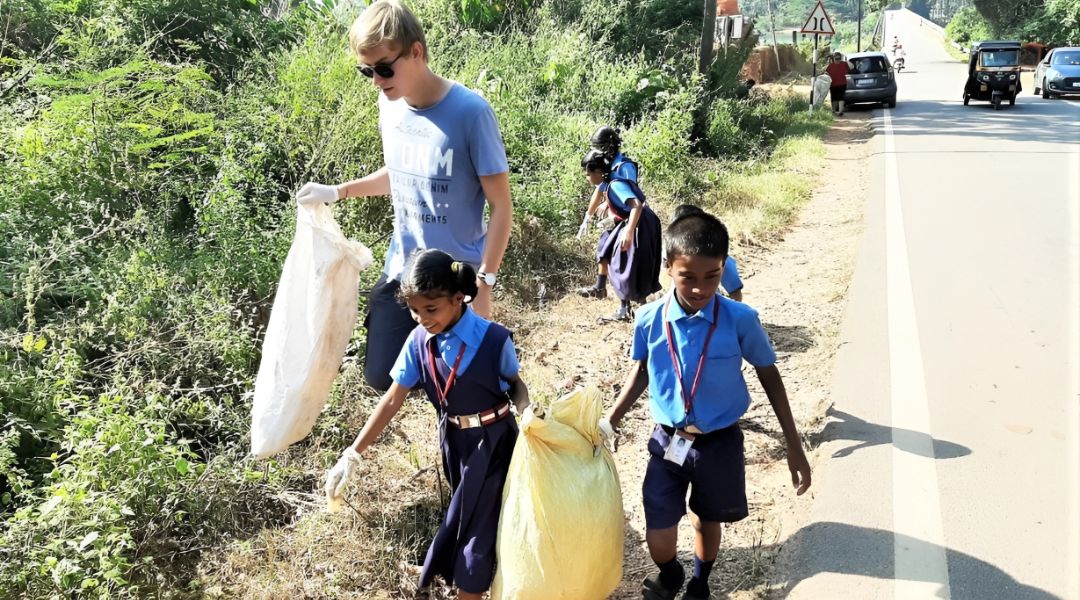
The Swachh Bharat Mission (SBM) launched on October 2, 2014 aims to end open defecation in India by October 2019. The SBM aims to construct 11 crore toilets in 5 years, to be able to achieve its goal.
Some have argued that the SBM policy framework is merely a continuation of the shortcomings of the NBA, and that ending open defecation by constructing toilets cannot fully realise the fundamental right to sanitation. Our field visits across different districts showed that households despite having toilets built, were not being used. A 2015 CAG report on the NBA echoed this in their five year audit of the programme, stating that “more than 30% of Individual Household Latrines (IHHLs) were defunct/non-functional for reasons like poor quality of construction, incomplete structure, non-maintenance, etc.”
It is in this context that Public Affairs Centre (PAC), engaged in a research-to-action project to assess and advocate for community-led participation in the SBM-G (G-Gramin) in two diametrically opposite administrative spectrums in terms of implementation: the states of Odisha and Tamil Nadu. According to government data, the former was a worse-performing state and the latter a better-performing one; we focused on six districts in each state.
What we learned
Across the six districts in which we worked in Tamil Nadu, we found that while there was considerable awareness on the construction of the toilets, people were not aware of the subsidies allotted under the SBM-G scheme, as well as how to maintain the toilets. Communities wanted ground-level motivators in each of the GPs to be the agents of change, and wanted them to be knowledge-empowered, to be able to help potential SBM-G beneficiaries access the subsidies under the SBM. Therefore, we trained members from the Village Poverty Reduction Committees/Panchayat Level Federation/Self Help Groups to become Sanitation Ambassadors or Motivators (as we call them). These were predominantly women, who participated in a two-day training programme–on understanding how a toilet should be constructed, what it should look like, how to avail of subsidies, how to build awareness on the importance of a toilet–that was carried out in each of the 18 Gram Panchayats in the six selected districts.
Anecdotal evidence pointed to women using toilets more than men. Sanitation Ambassadors thus carried out door-to-door campaigns to create awareness on the importance of a toilet for all members of the family. Over time, men began using toilets for defecation as well. In Odisha, PAC learnt that unlike in TN, communities were unaware of the technical elements of toilets and were often not included in the construction of toilets. This lack of involvement often resulted in toilets not being used and then relegated as storage spaces.
The state also does not currently have a cadre of Ambassadors to carry out awareness building and capacity building activities. Therefore, our efforts here were markedly different from those in Tamil Nadu. We emphasised on providing information directly to the communities using various types of focused Information Education Communication (IEC) related exercises. We shared information with communities on relatively simple tasks, such as what forms they would need to fill to avail of the subsidies, how to fill those forms, the technical aspects of building a toilet, and so on. This was done through wall paintings in public spaces through an interactive demo exercise followed by a ‘consumption evaluation’ to understand their level of internalisation of the messages in the wall paintings.
Engaging with the communities of users, apart from creating awareness can go a long way in sustaining community ownership post programmes like Swachh Bharat Mission. Given the vast diversity that exists in a country like India, cognizance of ground realities, followed by community engagement and advocacy can be an integral step leading to successful development programmes.
Via: What a research project taught us about Swachh Bharat Mission: The findings of a research-to-action project to assess the Swachh Bharat Mission underline the importance of using an extremely contextual, localised approach in implementation. By Dr Annapoorna Ravichander and Varsha Pillai
